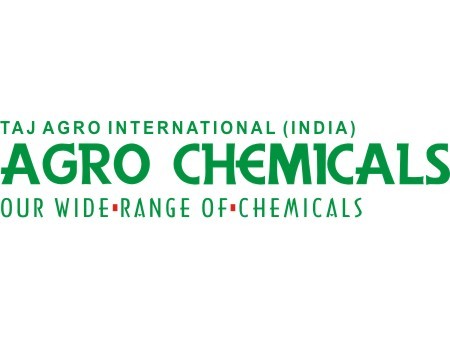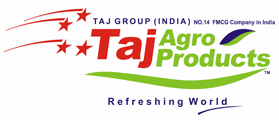
Agro Chemicals
Product Details:
Product Description
Agro Chemicals
- Deltamethrin
- Chlorophacinone
- Bromadiolone
- Warfarin
Manufactured In India By Taj Agro International.
Agro Chemicals
The agro chemicals that we offer is a preservative, suitable for agro plants and is very helpful in the production of the plants and crops.
With a growing global population, the pressure on the limited agricultural land is increasing and to meet this demand, the agro-chemicals have proved to be a rescue. Agro-chemicals, which includes fertilizers and pesticides, give the boost to the agricultural yield for agricultural land by providing nutrients and protecting the crops against pests and non-essential herbs.
The rapid increase in the population and limited land availability form the most important factor stimulating market growth for agrochemicals. The other market drivers are lack of natural resource management, need for plant genetic resource conservation, and improper planning by the farmers in crop production. However, lack of farmer awareness in using agrochemicals and rising concern about exploitation of environment are restraining the growth of the agrochemical market. Improvement in fabrication technology and new product development at competitive prices will be the key to future market growth.
Application :
Extensively used in agro industry in items for the prevention of pest insect from crops.
Our Agro chemical is used in variety of substitute such as :
- Insecticides
- Pesticides
- Herbicides
- Fertilizers
-----------------------------------------------------------------------------------------------------------------------
Deltamethrin
Deltamethrin products are among some of the most popular and widely used insecticides in the world, and have become very popular with pest control operators and individuals in the United States in the past five years.[1] This material is a member of one of the safest classes of pesticides: synthetic pyrethroids. While mammalian exposure to deltamethrin is classified as safe, this pesticide is highly toxic to aquatic life, particularly fish, and therefore must be used with extreme caution around water.
Deltamethrin is also used as an agricultural insecticide. The breakdown of the intake of deltamethrin residues between veterinary medicinal use and pest control is crucial for determining the magnitude of the residues of the substance that can be approved in fish, the maximum residue limit (MRL).The breakdown of the ADI on which the MRL is based, is as follows: Pest control: 85% of ADI Veterinary medicine: 15% of ADI = 1,5 1/4g/kg/day
Deltamethrin has little potential for bioaccumulation in fish. Experiments performed on the American catfish (Ictalurus punctatus) show that for fish continually exposed to deltamethrin, the substance bioaccumulates for 10-15 days. That is, the quantity in the fish increases day by day. After 10-15 days, the substance is converted in the fish, and the amounts of deltamethrin residues fall, despite continued exposure. When the test fish is transferred to clean water, deltamethrin will be excreted quickly.
When fish are exposed to deltamethrin for a brief period, which is the most comparable with the effects of salmon lice treatment, experiments on American catfish (Ictalurus punctatus) and salmon (Salmo salar) show no signs of bioaccumulation.
Product Description:
Deltamethrin
Chemical Name:
(S)-a-cyano-3-phenoxybenzyl-(1R)-cis-2, 2-dimethyl-3-(2, 2-dibromovinyl)cyclopropanecarboxylate
Structure Formula:
- Molecular Formula: C22H19Br2NO3
- Molecular Weight: 505.21
- CAS No.: 52918-63-5
Properties: It is white, flavourless crystal. M. P. 101-102, V. P. 4.0- 10-8pa (25). Hardly soluble in water or other hydroxylic solvents, soluble in most of organic solvents. It is stable to light and air. It can remain good quality for at least two years at normal temperature.
Toxicity:
- Acute oral LD50 to rats is 130mg/kg.
- Acutely toxic to crustaceans (salmon lice, copepods, shrimp, crab)
- Less toxic to fish and invertebrates (except for crustaceans)
- Non-toxic to microorganisms, birds and mammals.
Application: It is broad-spectrum and has powerful contacting and stomach poisoning effect, and swift effect to knock down, especially for the larva of insects of lepidoptera. It has repellant activity. It is widely used for controlling various pests on cotton, vegetable, fruit and other crops. It is also used for controlling hygienically pests outside.
Specification: Technical 98.5%
Package: Iron drums, 25kg/drum
------------------------------------------------------------------------------------------------------------------------------------------
Chlorophacinone
Chlorophacinone is an oil concentrate for impregnating bait material. Rozol is used also in production of paraffin blocks, water bait, and tracking powder and is variously labeled for use indoors and outdoors. Pests controlled: mice, rats, moles, muskrats, voles and vampire bats. Can be used in food areas, schools, hospitals, nursery homes and industrial plants. Does not require many feedings. It is an anticoagulant rodenticide, a single dose of a 50 mg/kg bait killing Rattus norvegiaus from the 5th day. It is normally incorporated as 50-250 mg/kg bait. It does not induce "bait-shyness". In mammals it uncouples oxidative phospharylation in addition to its anticoagulant action. This is the only rodenticide that dissolves in oil. Controls warfarin resistant rodents.
Formulation/s: Oil concentrate, dust concentrate, baits, tracking powder, paraffin blocks, pellets and ground spray. Concentrates available for mixing registered baits. Variously labeled for indoor/outdoor use.
- Appearance: yellow crystal powder
- Structure: Assay:95%
- Melting point: 140-144
- Moisture:0.5%
- Synonoms : Chlorophacinone
- IUPAC name: 2-[2-(4-chlorophenyl)-1-oxo-2-phenylethyl]indane-1,3-dione
Features Specifications: Very effective, a single dose of a 50mg/kg bait killing rattus norvegicus from the 5th d. it is normally incorporated as 50-250 mg/kg bait.
Specifications:
- Chemical name: 2-[2-(4-chlorophenyl)-2-phenylacetyl]indan-1,3-dione
- Formula: C23H15ClO3
- Structure: Mainly applied in oil concentrate for impregnating bait material, Rozol is also used in the production of paraffin blocks, water bait, and tracking powder and is variously labeled for use indoors and outdoors.
- Pests controlled: mice, rats, moles, muskrats, voles, vampire bats Can be used in food areas, schools, hospitals, nursery homes and industrial plants, and does not require many feedings.
- This chemical is an anticoagulant rodenticide, a single dose of a 50mg/kg bait killing Rattus norvegiaus from the 5th day. It is normally incorporated as 50 -250mg/kg bait, and does not induce "bait-shyness".
- In mammals it uncouples oxidative phospharylation in addition to its anticoagulant action. This is the only rodenticide that dissolves in oil, and is able to control Warfarin resistant rodents (8c).
- Types of packaging: 25 Kg. Sacks, 10 Kg. Buckets
-------------------------------------------------------------------------------------------------------------------------------------------
Bromadiolone
Bromadiolone: Does not occur naturally. It is used as a rodenticide in urban and farm rodent control and acts by disrupting the normal blood clotting mechanisms causing an increased tendency to bleed. The rodenticidal properties of bromadiolone were reported in 1976. It is a second generation anticoagulant that is effective against rats and mice, including those resistant to first generation anticoagulants. It is used in the form of ready-to-use baits of low concentration containing 0.005% bromadiolone. Bromadiolone is a white to off-white powder. Its solubility in water is very low (less than 20 mg/litre at 20C). It is slightly soluble in ethanol and ethyl acetate, and soluble in dimethylformamide. The flash-point temperature is 218C.
Bromadiolone is absorbed through the gastrointestinal tract, skin, and respiratory system. The major route of elimination in different species after oral administration is via the faeces. The liver is the main organ of accumulation and storage. Bromadiolone has been found in the liver as the unchanged parent compound. Elimination from the liver is biphasic with an initial rapid phase of 2-8 days and a slower phase with a half-life of 170 days. No data are available on the kinetics and metabolism of bromadiolone in humans.
Bromadiolone is an odorless, yellow-white to off-white powder. It is the active ingredient in many rodenticides. Bromadiolone formulations include baits, mini pellets, paraffin blocks, tracking powders, concentrates, and dusts.
Bromadiolone falls into the class of rodenticides known as anticoagulants. Most rodent control today utilizes anticoagulant rodenticide baits. Anticoagulants cause death in rodents by disrupting the normal function for blood-clotting, resulting in death from internal bleeding. Death is delayed; occuring within 3 to 10 days after feeding begins.
- IUPAC Name: 3-[3-[4-(4-bromophenyl)phenyl]-3-hydroxy-1-phenylpropyl]-2-hydroxychromen-4-one
- CAS Registry Number: 28772-56-7
- Molecular Formula: C30H23BrO4
- Molecular Weight: 527.405220 [g/mol]
- H-Bond Donor: 2
- H-Bond Acceptor: 4
- Chemical Name: 3-[3-(4'-bromo[1,1'-biphenyl]-4-yl)-3-hydroxy-1-phenylpropyl]-4-hydroxy-2H-1-benzopyran-2-one
- Action : rodenticides
- Appearance: grayish white
Properties:
- Tech: White odorless powder. Pure: Melting point 200-210? Tech solubility: in acetone 22.30 g/l; hexane 0.20 g/l.
- Usage : Concentrates used in preparation of rodent baits.For house mice, roof rats, Norway rats (including warfarin resistant strains).
- Composition : Mixture of two diastereoisomers. Tech. grade bromadiolone is 97% pure. Mol. wt. 527.4 M.f. C 30 H 23 BrO 4 Form Tech. is a yellowish powder. M.p. 200-210 oC (mixture of two diastereoisomers) V.p. 0.002 mPa (20 oC) Henry 5.55 ' 10 -5 Pa m 3 mol -1 (calc.) Solubility In water 19 mg/l (20 oC). In dimethylformamide 730, ethyl acetate 25, ethanol 8.2 (all in g/l, 20 oC). Soluble in acetone; slightly soluble in chloroform; practically insoluble in diethyl ether and hexane. Stability Thermally stable below 200 oC.
APPLICATIONS : Bromadiolone
Package : 250g in a plastic bag. 5kg in a carton. or packing according to buyer's requirement.
-----------------------------------------------------------------------------------------------------------------------
WARFARIN
Warfarin is an anticoagulant (blood thinner). Warfarin reduces the formation of blood clots by blocking the formation of certain clotting factors. Warfarin is used to prevent heart attacks, strokes, and blood clots in veins and arteries. Warfarin may also be used for purposes other than those listed in this medication guide.
Warfarin (Coumadin) is an anticoagulant medication that is used to prevent thrombosis (clots) and embolism in many disorders. Warfarin activity has to be monitored by frequent blood testing for the International Normalized Ratio (INR).Warfarin is a synthetic derivative of coumarin, a chemical found naturally in many plants -- it decreases blood coagulation by interfering with vitamin K metabolism.
Mechanism of action
Warfarin inhibits the effective synthesis of biologically active forms of the vitamin K-dependent clotting factors: II, VII, IX and X, as well as the regulatory factors protein C, protein S and protein Z. Other proteins not involved in blood clotting, such as osteocalcin, may also be affected.
The precursors of these factors require carboxylation of their glutamic acid residues to allow the coagulation factors to bind to phospholipid surfaces. This carboxylation is linked to oxidation of vitamin K to form vitamin K epoxide, which is in turn recycled back to the reduced form by the enzyme vitamin K epoxide reductase (VKOR). Warfarin inhibits epoxide reductase (specifically the VKORC1 subunit), thereby diminishing available vitamin K stores and inhibiting production of functioning coagulation factors. As the body stores of previously-produced factors degrade (over several days), the anticoagulation effect becomes apparent. The coagulation factors are produced, but have decreased functionality due to undercarboxylation; they are collectively referred to as PIVKAs (proteins induced [by] vitamin K absence/antagonism).
Packaging: 50 Kg/Drum In Plastic Lined Cardboard Drum
Factory Icon Address:
Taj Agro Products
Plot No. 32/ 2B, Village Tondali,
Taluka - Khalapur, Dist. Raigad,
Maharashtra - 410 203, India
Taj Agro Food / Manufacturing Unit [II]
Address:
Plot No. - 1019, Vill. - Sarigam, G.I.D.C.,
Road No. 10, Dist. - Valsad, State of Gujrat,
Pin Code - 396142, India.
|
|
|
|
 |
TAJ AGRO INTERNATIONAL
All Rights Reserved.(Terms of Use) Developed and Managed by Infocom Network Private Limited. |

